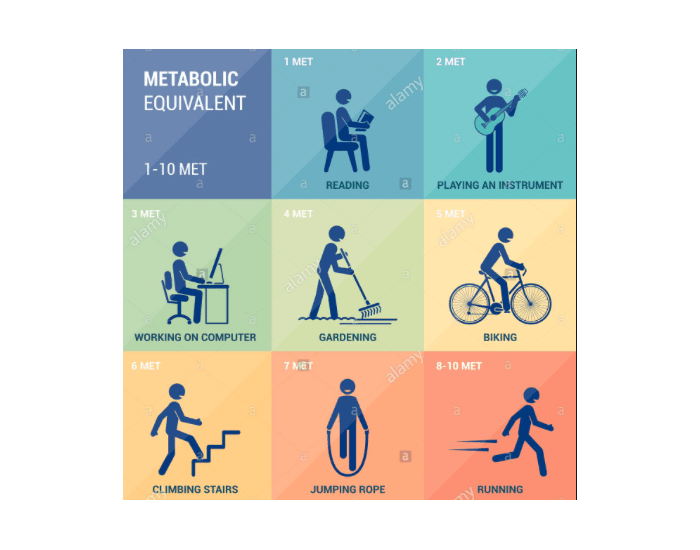If you read the title and thought – I’m definitely beating a sedentary lifestyle. “I go to the gym and invest so much time in building these babies (muscles)” (or) “I’m on the top of the game, I run/jog/walk every day for so many kilometers”; (or) “I do yoga every day, I’m super healthy”- then, my dear friend, this is especially for you!
For starters, let us know what’s sedentary lifestyle means. Science says that any waking behavior characterized by an energy expenditure ≤1.5 METs (metabolic equivalent) while in a sitting or reclining posture is sedentary behavior. In simple words, you’re being sedentary while sitting or reclining or in a sleeping position (but not asleep).

Therefore, you lead a sedentary lifestyle if it involves excessive sitting or reclining. If you sleep a lot that’s another problem but if you are on the bed a lot, you ARE being sedentary.
So my dear “gymmers”, runners and yogis if you sit excessively on a daily basis, then in spite of all that workout YOU ARE being sedentary. It is possible to be physically active and be having a sedentary lifestyle at the same time.
Difference between physical inactivity and sedentary behavior
It might look like wordplay but there’s an actual difference between being physically inactive and being sedentary. They differ in terms of being insufficiently active vs completely inactive. Take a look at the table below and judge your own activity levels! To bring things into perspective: you are sedentary if most of your time goes with activities that spend equal to or below 1.5 METs of energy and you are slightly active with activities spending anywhere between 1.5 to 3 METs of energy (Metabolic equivalent here shows the amount of energy spent).
| Physical activity | MET |
| Light intensity activities | < 3 |
| sleeping | 0.9 |
| watching television | 1.0 |
| writing, desk work, typing | 1.5 |
| walking, 1.7 mph (2.7 km/h), level ground, strolling, very slow | 2.3 |
| walking, 2.5 mph (4 km/h) | 2.9 |
| Moderate intensity activities | 3 to 6 |
| bicycling, stationary, 50 watts, very light effort | 3.0 |
| walking 3.0 mph (4.8 km/h) | 3.3 |
| calisthenics, home exercise, light or moderate effort, general | 3.5 |
| walking 3.4 mph (5.5 km/h) | 3.6 |
| bicycling, < 10 mph (16 km/h), leisure, to work or for pleasure | 4.0 |
| bicycling, stationary, 100 watts, light effort | 5.5 |
| sexual activity | 5.8 |
| Vigorous intensity activities | > 6 |
| jogging, general | 7.0 |
| calisthenics (e.g. pushups, sit ups, pullups, jumping jacks), heavy, vigorous effort | 8.0 |
| running jogging, in place | 8.0 |
| rope jumping | 10.0 |

For those who do not indulge in specific workouts or have a planned physical activity time here are some daily activities and their METs (according to a study):

| ACTIVITY | METs | DESCRIPTION |
| Descending stairs | 3 | downstairs |
| Washing dishes | 2.3 | wash dishes – standing or in general (not broken into stand/walk components |
| Dusting | 2.5 | cleaning, light (dusting, straightening up, changing linen, carrying out trash |
| Gardening | 4.5 | planting seedlings, shrubs |
| mopping | 3.5 | mopping |
| mowing | 5.5 | mowing lawn, general |
| Painting | 4.2 | painting |
| Organizing a room | 3 | implied walking – putting away household items – moderate effort |
| Sweeping | 3.3 | carpet sweeping, sweeping floors |
| vacuuming | 3.5 | vacuuming |

How much sitting is too much?
While research has not been able to come up with a fixed period of time ( as with blood pressure or blood glucose levels), studies state that 2 ½ to 3 hours of continuous sitting and overall sitting time of greater than or equal to 6 hours per day is damaging enough.

Health effects of a sedentary lifestyle
Physical inactivity and sedentary behavior is the 4th major risk factor for non-communicable diseases next to high blood pressure, tobacco use and high blood glucose levels. It is noteworthy that sedentary behavior is the easiest to manage among all the risk factors mentioned above.
The immediate effects of excessive sitting are a metabolic syndrome, which in turn paves way for the other major one i.e.
- Cardiovascular disease
- Cancer
- Chronic respiratory disease
- Diabetes.

Metabolic syndrome is a cluster of conditions — increased blood pressure, high blood sugar, excess body fat around the waist, and abnormal cholesterol or triglyceride levels that occur together.
Besides the organ damages due to these disorders, your body is greatly subjected to neck and back postural disorders, muscle deterioration, leg disorders and many more!

You are at more risk if any of these diseases run in your family! So you better WATCH WHEN YOU SIT and don’t let a sedentary lifestyle beat you.
Subscribe to our channels on YouTube & Telegram








Unique and Good article.
Informative 👍